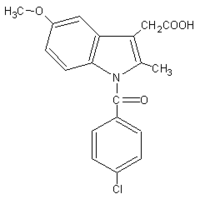Endometriosis drugs/steroids Taking GnRH agonist drugs for six months was linked to a 6-15 percent decrease in spinal bone density in women under 25. The loss is reversible when therapy is stopped, but women who are prescribed these drugs for endometriosis before reaching peak bone mass in their mid-20s may never maximize their bone density, says Sanjay Agarwal, M.D., acting director of reproductive medicine at Cedars-Sinai Medical Center in Los Angeles. If you are under 25 and must take these drugs, make sure your doctor prescribes an add-back" estrogen therapy such as Prempro 5 to minimize their impact on your bones. Also, get plenty of calcium and weight-bearing exercise, and avoid smoking and nonessential steroid medications, which can cause bone loss. -- Mary Ellen Strote
Depo-Provera
A study conducted at Seattle-based Group Health Cooperative followed 440 women ages 18-39 for three years and found that women who used Depo-Provera lost 1.12 percent of the bone density in their hips each year, compared to 0.05 percent per year among women who didn't use the drug. However, women who stopped using Depo-Provera during the study had bone-density increases similar to nonusers' 30 months later. -- Karen Asp
Missed periods
If you haven't had a menstrual period for three or more months (and you're not pregnant), it could be a symptom of premature ovarian failure, a possible harbinger of bone disease, a National Institutes of Health study found. Estrogen and other hormones produced by the ovaries help maintain bone density. When the ovaries fail, the declining estrogen levels that result put younger women at higher risk for osteoporosis. "Missed periods are common in young women, so it's understandable that more than half of our patients weren't concerned at first," says lead researcher Lawrence Nelson, M.D. But despite their lack of initial concern, 67 percent of study participants had already experienced bone-density loss, which may be avoided with hormonereplacement therapy. -- R.G.
The wrong painkiller
If you have a bone fracture, your choice of painkiller may affect the healing process, animal research indicates. When drugs such as celecoxib (Celebrex) and rofecoxib (Vioxx) were given to animals with broken bones, the breaks weren't fully healed after two months, says Pat O'Connor, Ph.D., an orthopedic researcher at the UMDNJ-New Jersey Medical School in Newark. Both these drugs block the enzyme cox-2, which causes pain and inflammation but which also is crucial for bone healing, O'Connor explains. The prescription painkiller indomethacin (Indocin) delayed healing a week compared to using no painkillers. If you break a bone,, until more research is done, ask your doctor about the best pain medicine. -- C.P.
COPYRIGHT 2003 Weider Publications
COPYRIGHT 2003 Gale Group



